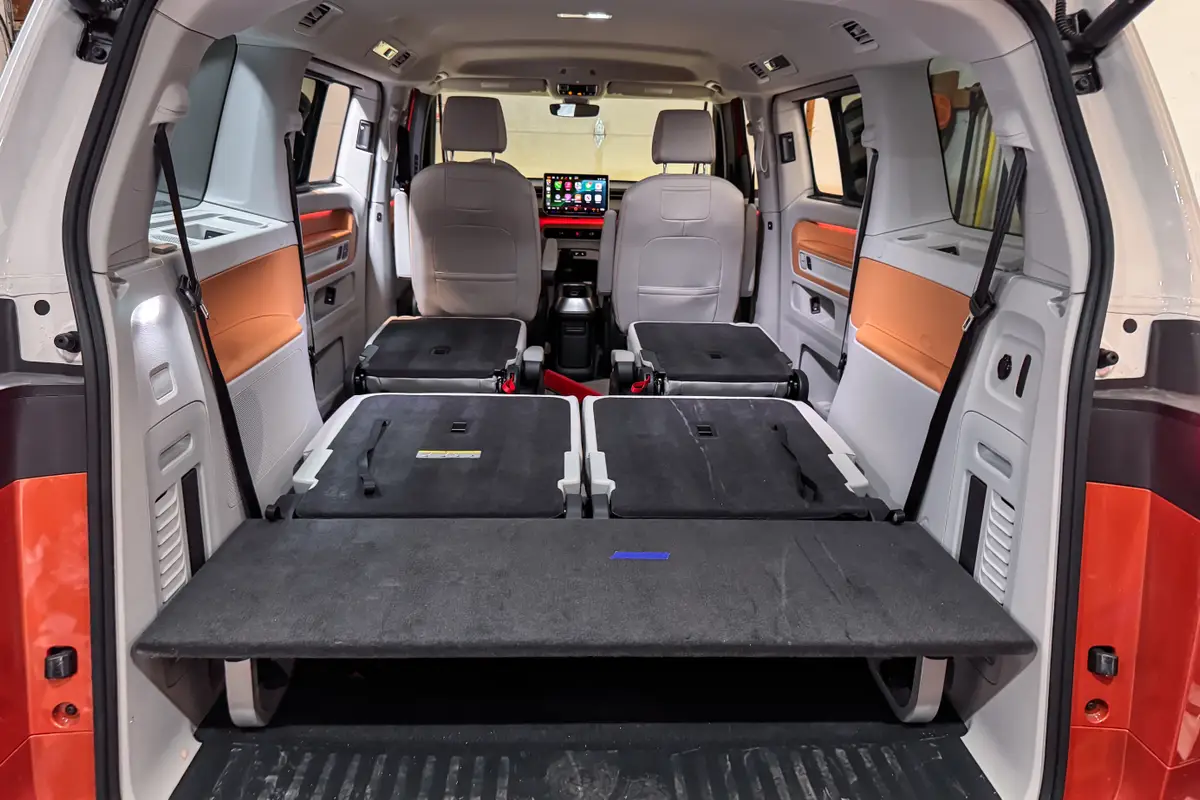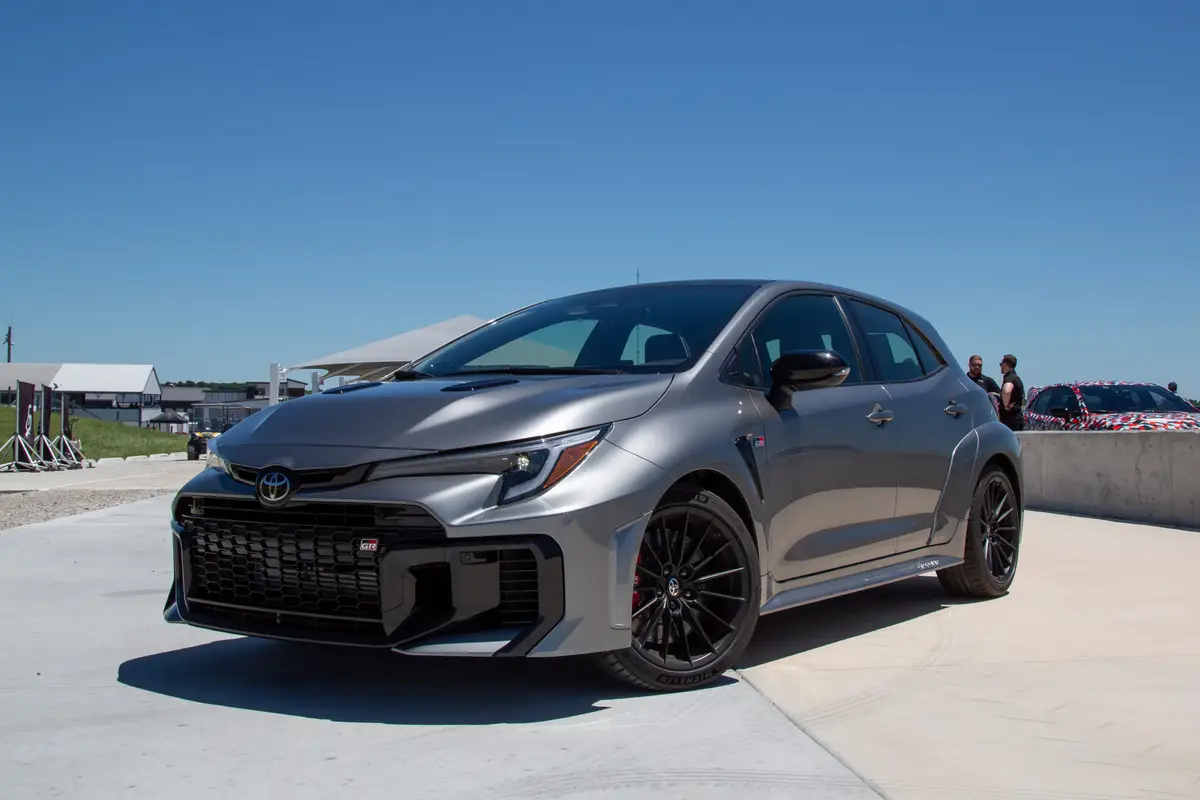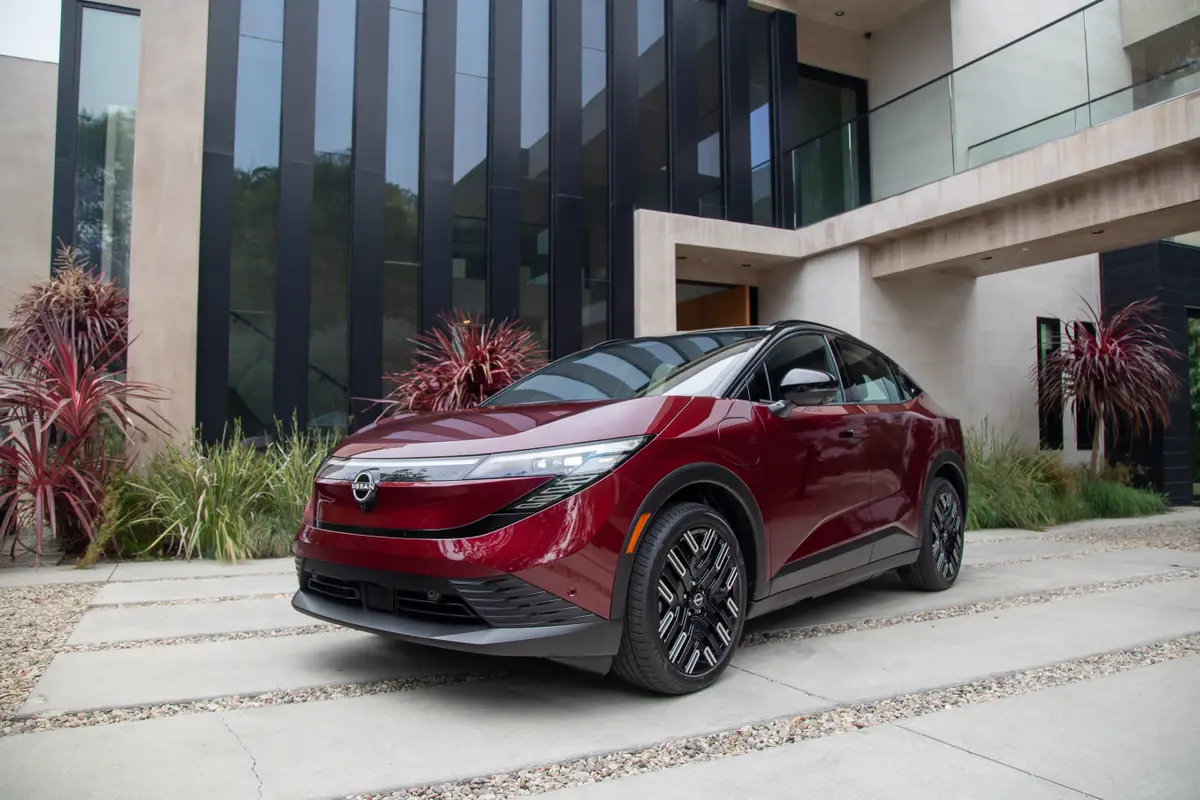2017 Hyundai Santa Fe: Car Seat Check

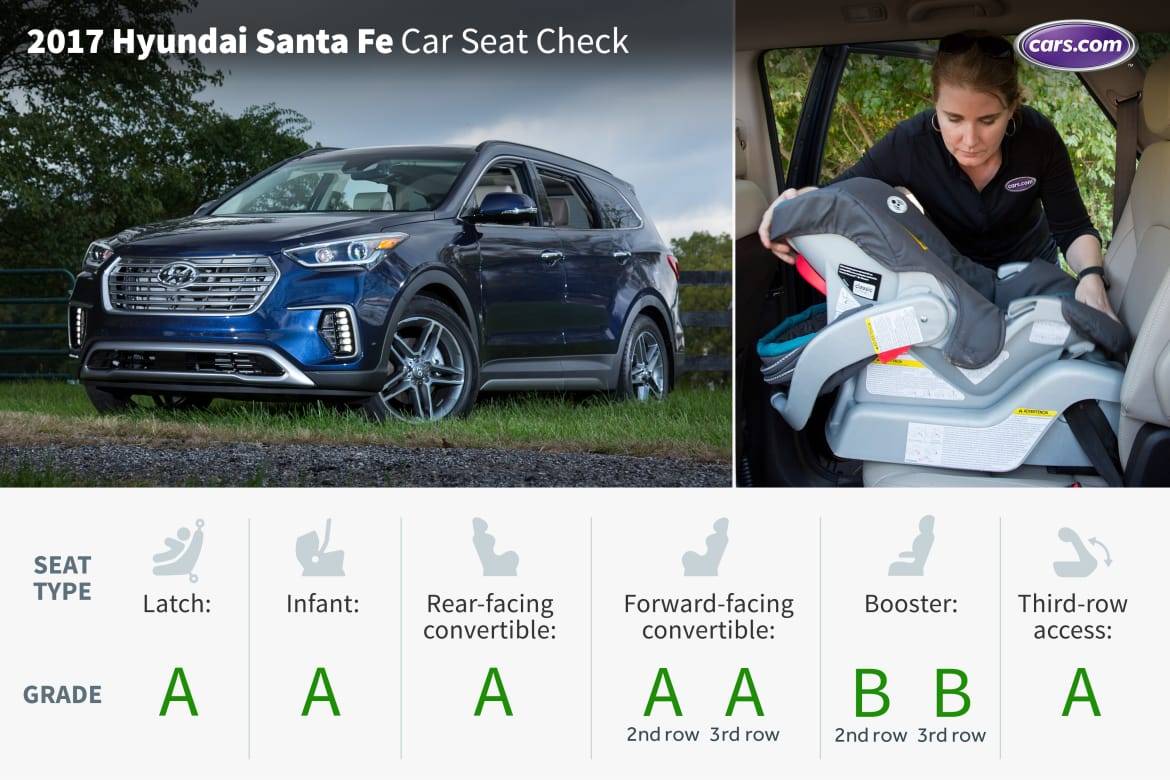
CARS.COM — The Hyundai Santa Fe is a comfortable, capable family hauler, but middling crash test scores had us thinking twice about recommending it. For 2017, however, we’re on board. Hyundai’s three-row SUV got a makeover with updated styling and — more importantly — it passed its Insurance Institute for Highway Safety crash tests with the highest scores of good. Similarly, we gave the Santa Fe high grades in our Car Seat Check thanks to ample legroom and an easy-to-access Latch system.
How many car seats fit in the second row? Two
What We Like
- There are two sets of Latch anchors in the Santa Fe’s second row and they sit just within the seat bight, where the back and bottom cushions meet. They are easy to use. The two top tether anchors sit tethers midway down the captain’s chairs seatbacks; they’re clearly marked and also easy to use.
- Both the rear-facing infant seat and the rear-facing convertible went in easily and fit well; we did not need to move the front passenger seat forward to accommodate them.
- After raising the head restraint, the forward-facing convertible fit well and was easy to install in the second row.
- Third-row access was easy thanks to a wide opening between the second-row captain’s chairs. The chairs also collapse and slide forward for access when a car seat isn’t installed.
- There are no lower Latch anchors in the third row, so we used the seat belt to install the forward-facing convertible. It fit well, and the third row’s one top tether anchor was easy to find and use.
What We Don’t Like
- Although the booster fit well in both the second and third rows, the buckles in both rows are on floppy bases, making them harder for kids to grasp and use independently.
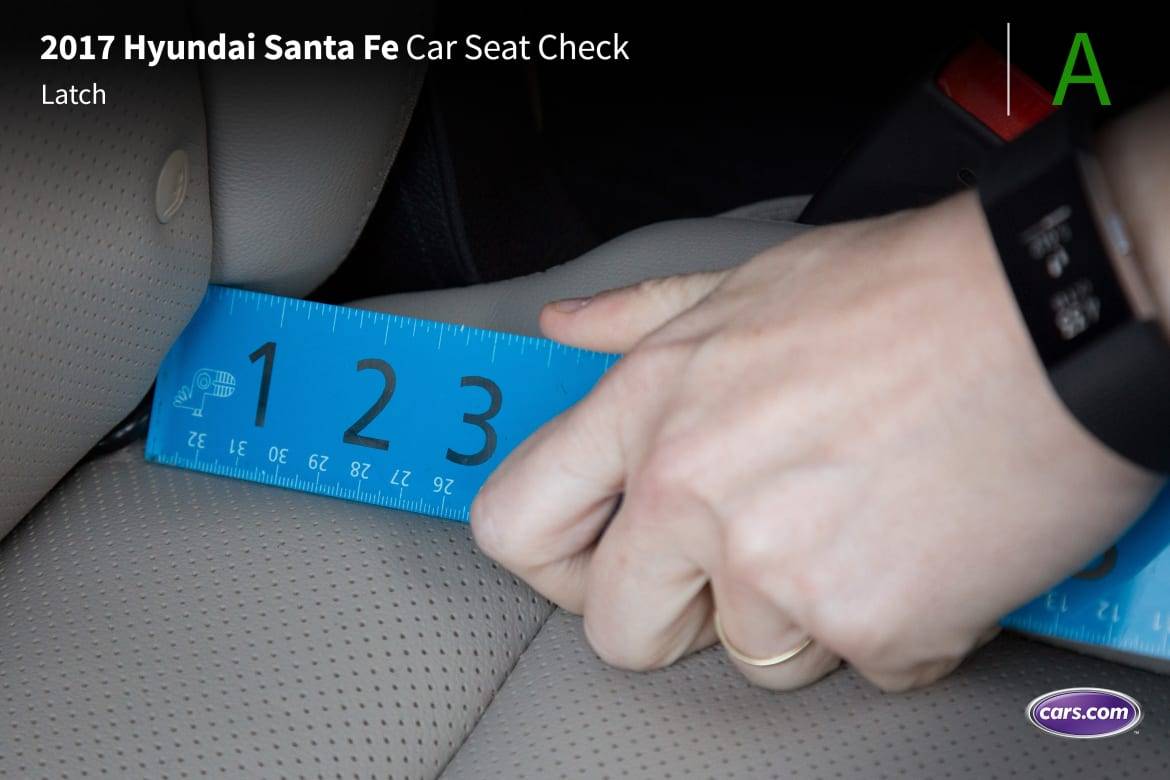
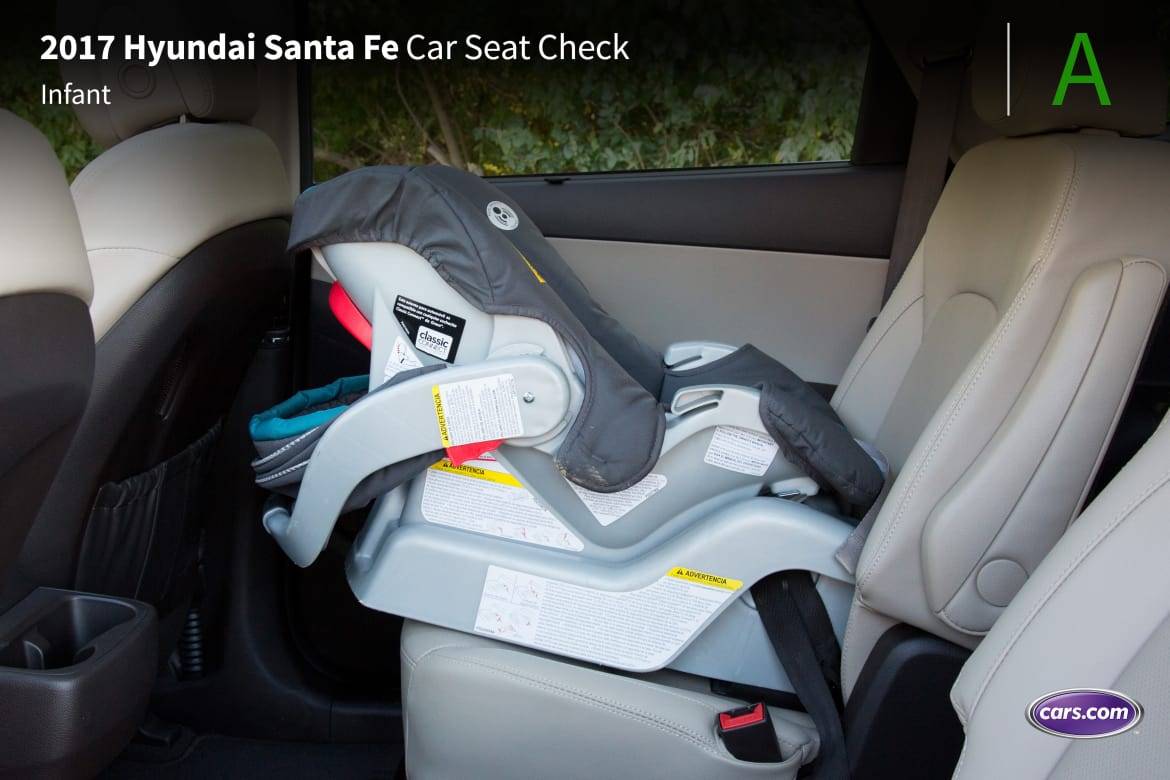
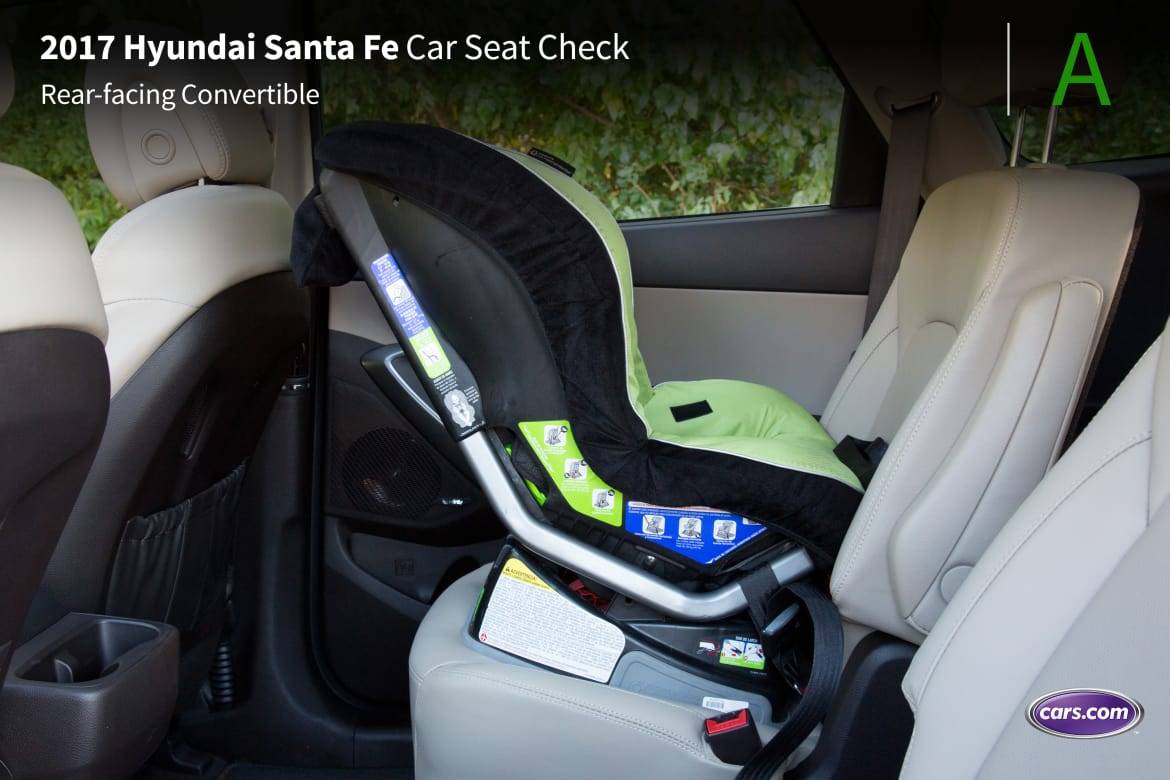
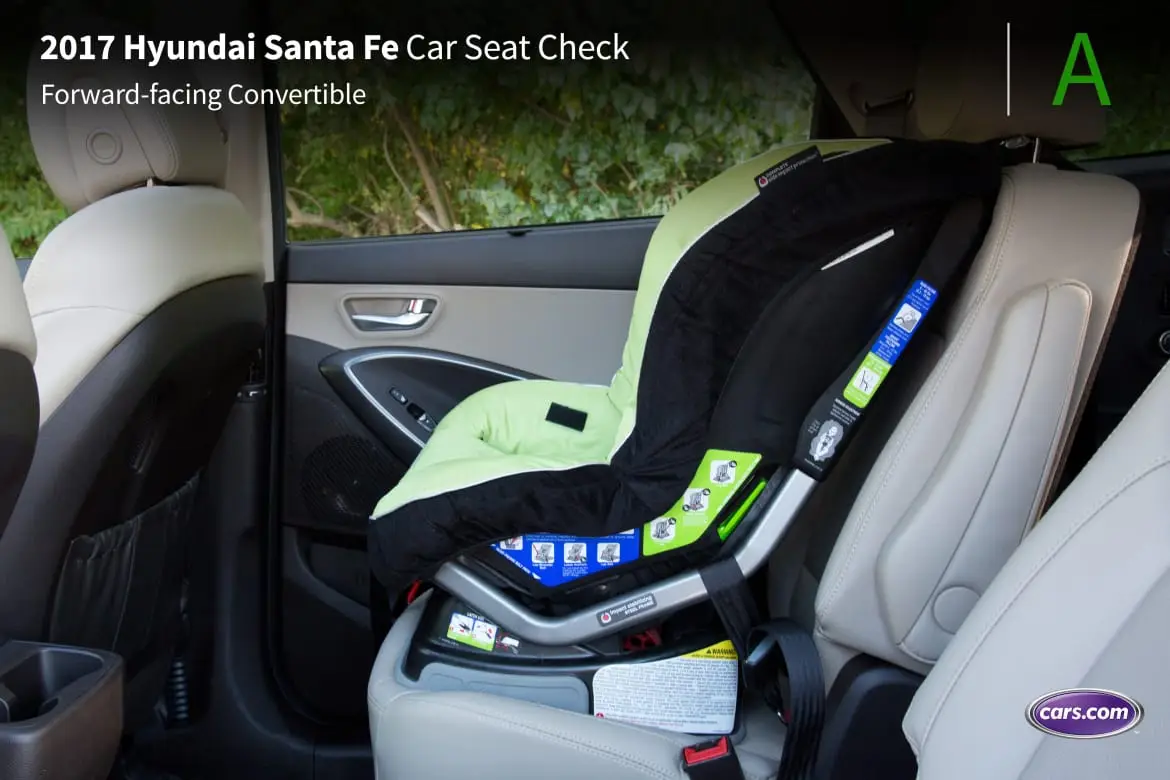
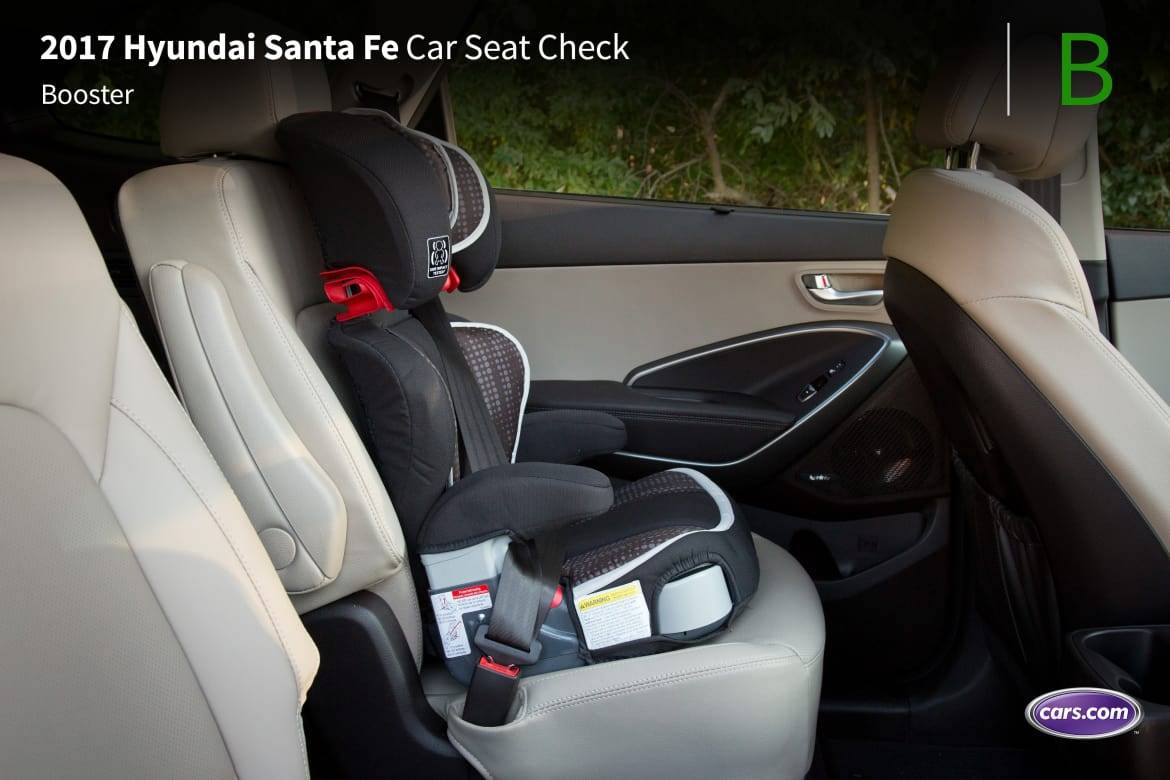
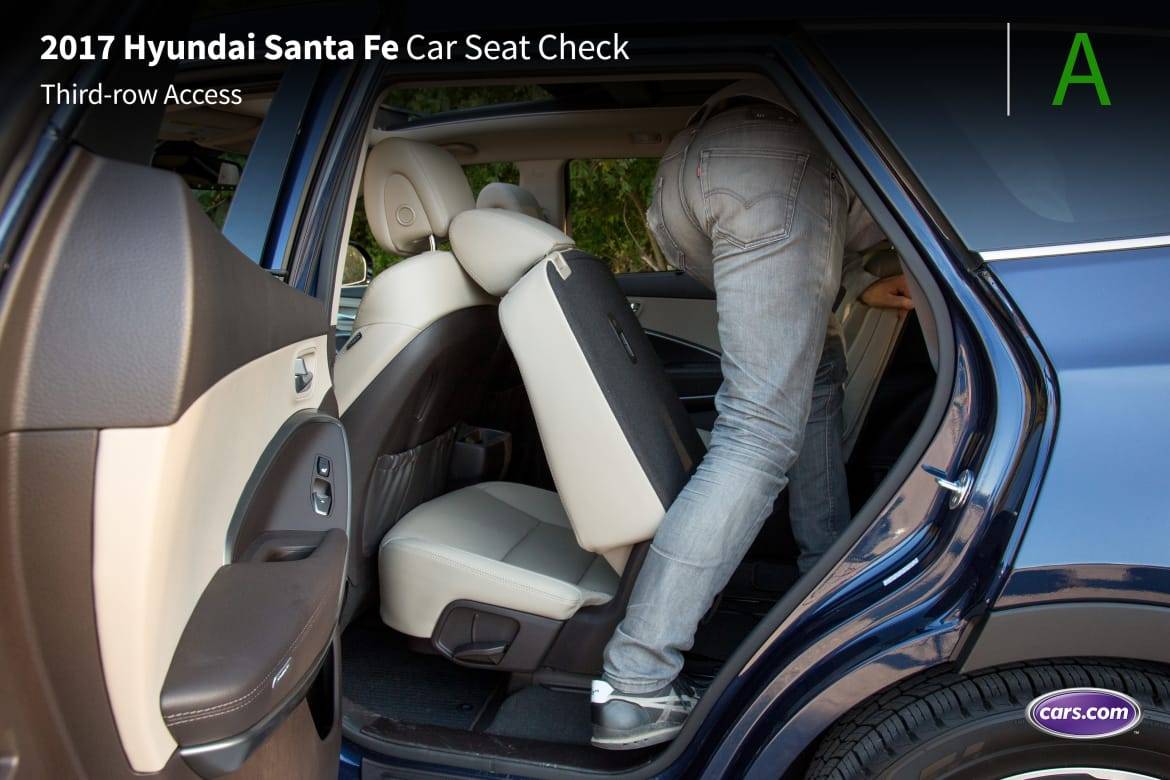
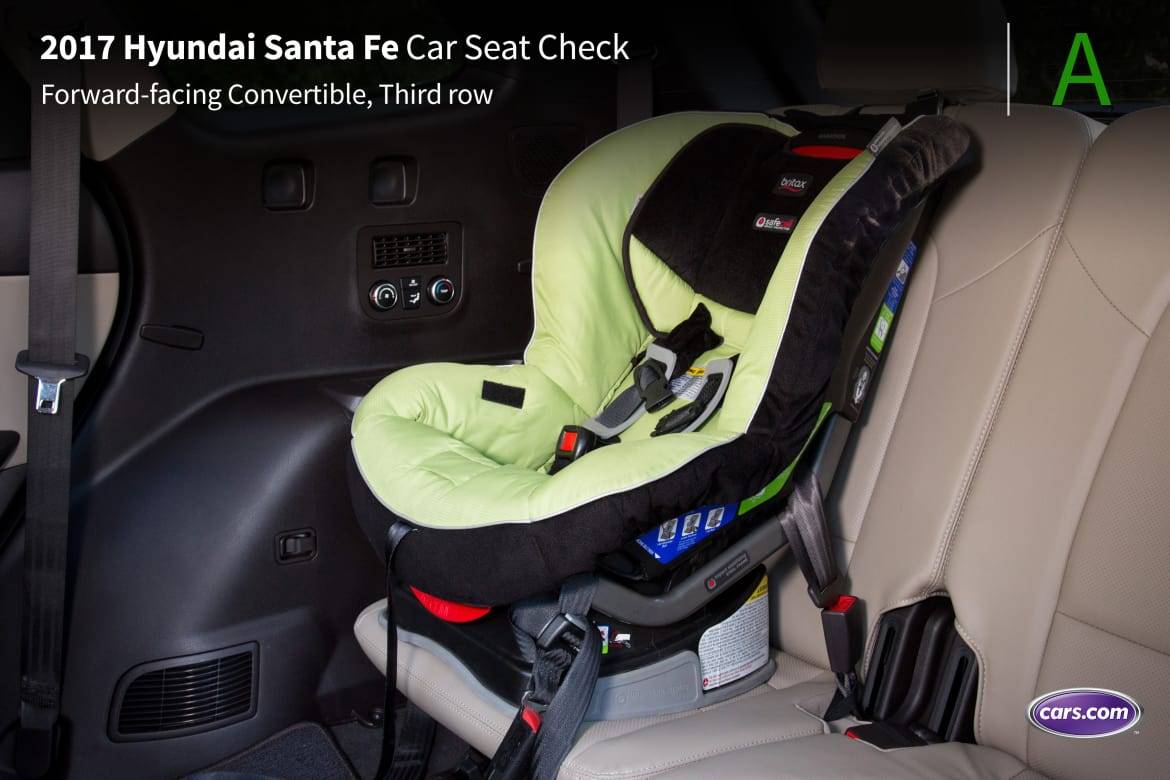
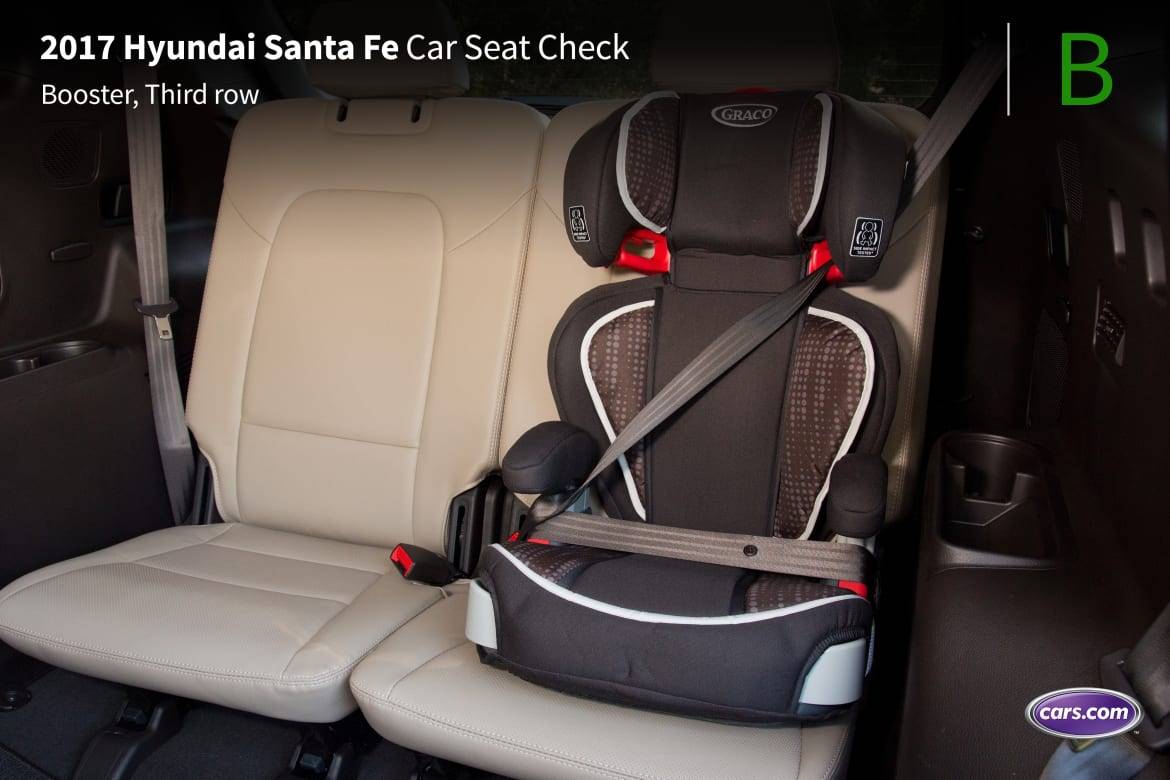










Grading Scale
A: Plenty of room for the car seat and the child; doesn’t impact driver or front-passenger legroom. Easy to find and connect to Latch and tether anchors. No fit issues involving head restraint or seat contouring. Easy access to the third row.
B: Plenty of room. One fit or connection issue. Some problems accessing third row when available.
C: Marginal room. Two fit or connection issues. Difficult to access third row when available.
D: Insufficient room. Two or more fit or connection issues.
F: Does not fit or is unsafe.
About Cars.com’s Car Seat Checks
Editors Jennifer Geiger, Jennifer Newman and Matt Schmitz are certified child safety seat installation technicians.
For the Car Seat Check, we use a Graco SnugRide Classic Connect 30 infant-safety seat, a Britax Marathon convertible seat and Graco TurboBooster seat. The front seats are adjusted for a 6-foot driver and a shorter passenger. The three child seats are installed in the second row. The booster seat sits behind the driver’s seat, and the infant and convertible seats are installed behind the front passenger seat.
We also install the forward-facing convertible in the second row’s middle seat with the booster and infant seat in the outboard seats to see if three car seats will fit; a child sitting in the booster seat must be able to reach the seat belt buckle. If there’s a third row, we install the booster seat and a forward-facing convertible. Learn more about how we conduct our Car Seat Checks.
Parents should also remember that they can use the Latch system or a seat belt to install a car seat, and that Latch anchors have a weight limit of 65 pounds, including the weight of the child and the weight of the seat itself.

News Editor Jennifer Geiger joined the automotive industry in 2003, much to the delight of her Corvette-obsessed dad. Jennifer is an expert reviewer, certified car-seat technician and mom of three. She wears a lot of hats — many of them while driving a minivan.
Featured stories
